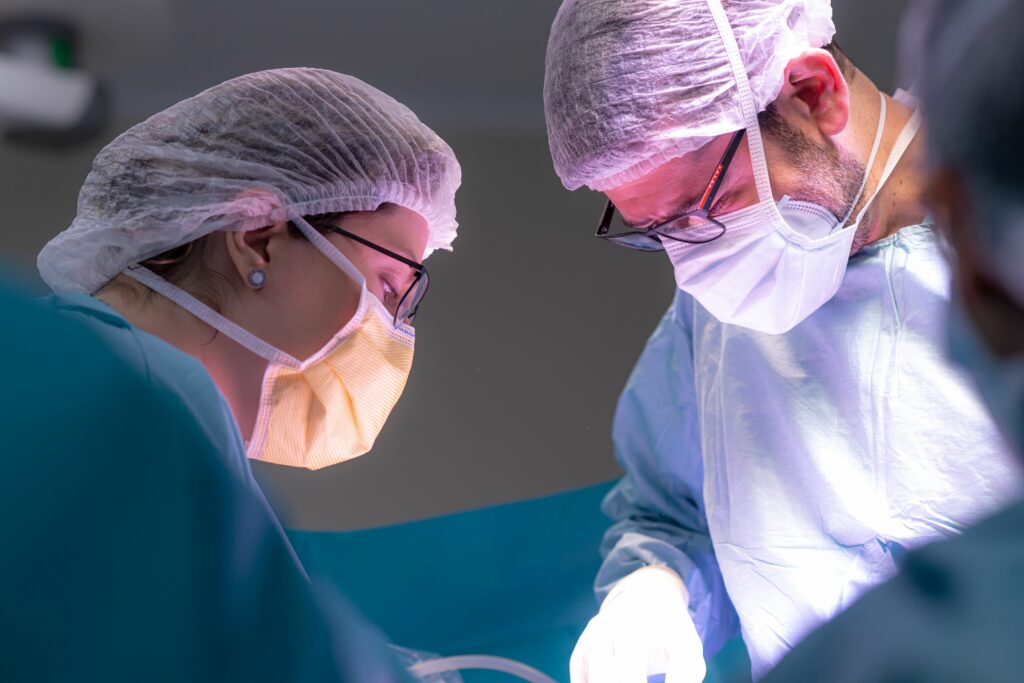Key points:
- The use of post-surgery medication is only temporary.
- In many surgeries, patients can walk in the next eight hours.
- Regardless of age, everyone can be a candidate for back surgery.
Patients and their families have many doubts and fears regarding spinal surgery.
“Musculoskeletal disorders comprise more than 150 disorders that affect the locomotor system. They range from sudden and short-term disorders, such as fractures, sprains, and strains, to chronic diseases that cause permanent limitations of functional capacities and disability.“1
Dr. Ulises García González, a neurosurgeon at ABC Medical Center, says that the vast majority of patients with some type of back condition are susceptible to using conservative treatments with the help of medications, physiotherapy, and rehabilitation. But about 30% of all patients are candidates for surgical treatment.
Achieving timely care will allow the patient the possibility of receiving only conservative and non-surgical treatment, but if surgical treatment is necessary, timely care may benefit from a minimally invasive treatment, with a very short hospital stay and a speedy recovery.
Thanks to current technological advances, patients who undergo surgery for a condition, whether in the cervical, thoracic, or lumbar spine, can even walk in the first eight hours after the procedure. This measure works as a convenient way to assess the treatment’s success.
One of the biggest concerns that patients may have when talking about back surgery is the possibility of becoming paralyzed, says Dr. Garcia. The reality is that using today’s technology and navigation systems, physicians can place screws, instruments, and spacers with pinpoint precision, as well as use intraoperative neurophysiological monitors, image viewers, or high-tech microscopes. Which means that the possibility of being paralyzed becomes null or non-existent.
After spinal surgery, the patient will experience three phases in their recovery:
- Initial recovery phase. This includes the first few weeks after surgery, and possibly pain-relieving, anti-inflammatory, and some anti-neuritic medications. During their hospital stay, the patient will be accompanied by physical therapy and rehabilitation specialists.
- Adaptation phase. Between two and six weeks after surgery, the patient will begin to adapt to their daily activities and routines.
- Final phase. After a successful surgery, the use of medications will no longer be necessary and you will be able to get back to your routine but with a better quality of life.
There is no single age at which a spine condition can occur, but no matter how old you are, every patient can be a candidate for back surgery.
Young people can have spinal injuries produced by the inappropriate practice of some high-impact sport or some type of accident. On the other hand, older adults are more likely to suffer from neck pain, back pain, low back pain, and numbness in the arms or legs as a result of a spinal disease; which makes them susceptible to surgical treatment that leads to a good prognosis.
Dr. García says that no matter what your spinal problem is or your age, with the help of the right specialists, tests, and the correct application of technology, a solution can be found for them, allowing you to return to your daily physical activities and have a good quality of life.
In the Neurological Center of ABC Medical Center we can give you specialized care. Contact us!
Fuentes:
Dr. Ulises Garcia Gonzalez – Neurosurgeon specialist at ABC Medical Center
https://youtu.be/Lo7xWD0kZOA
1https://www.who.int/es/news-room/fact-sheets/detail/musculoskeletal-conditions



